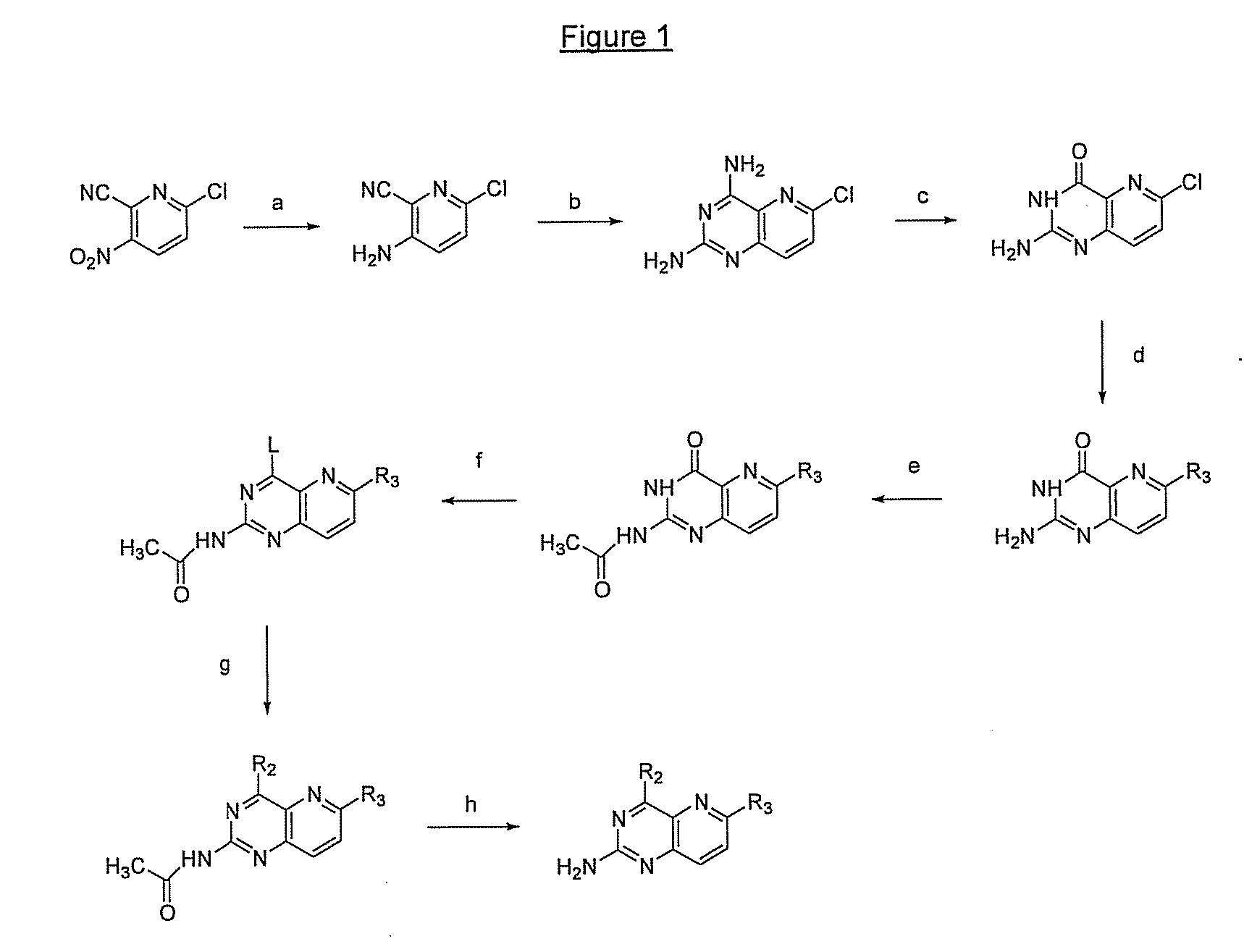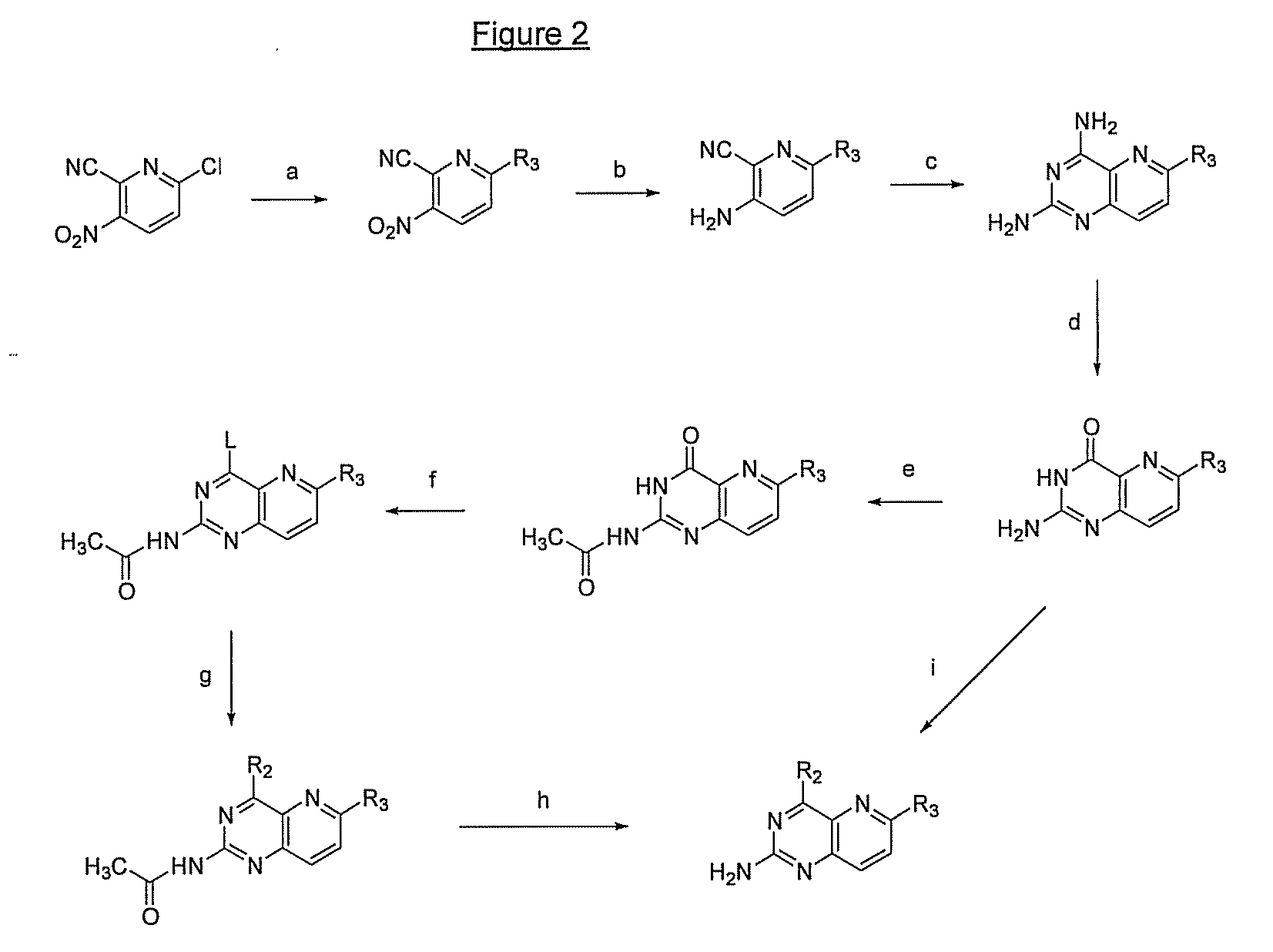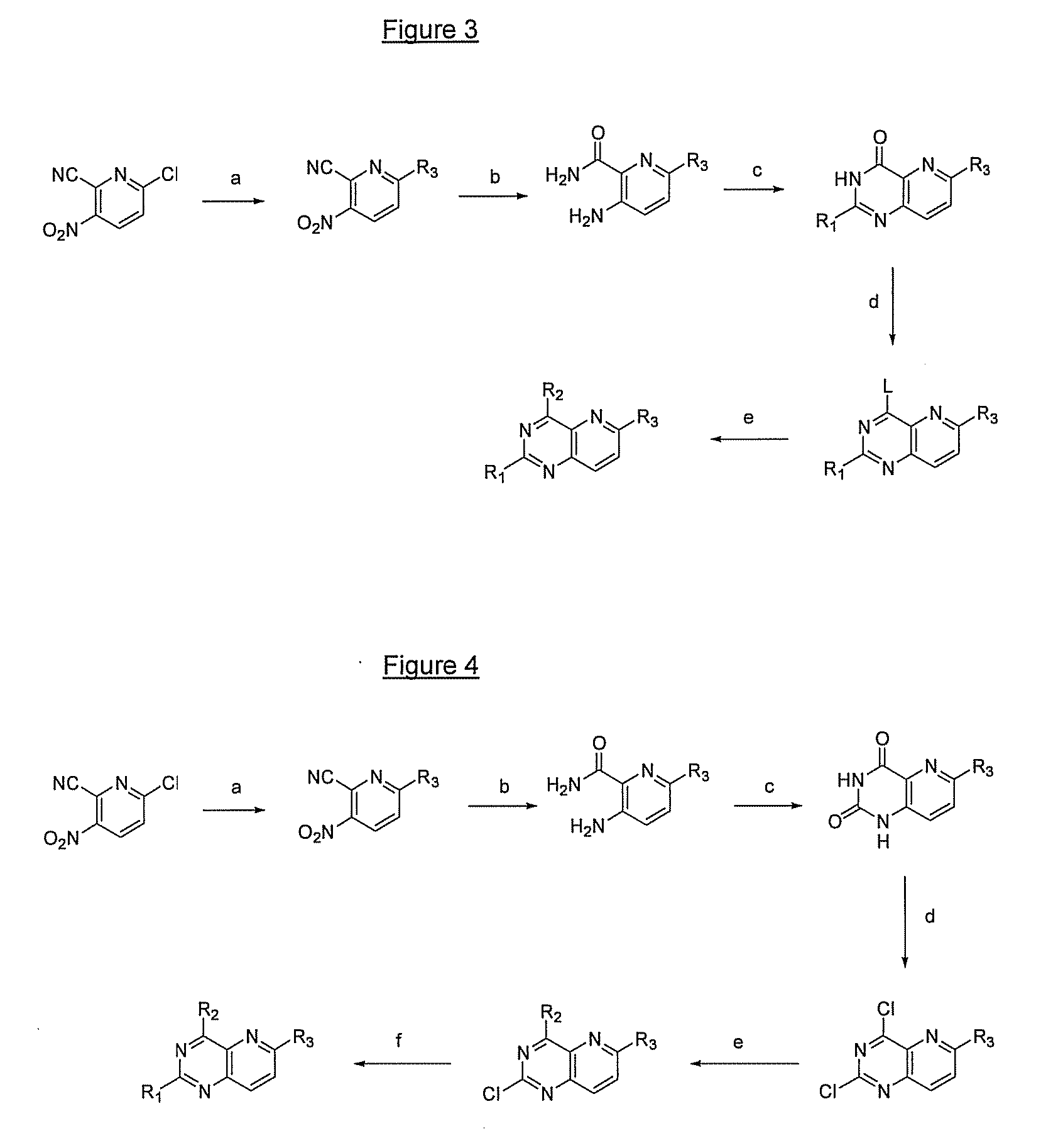Pyrido(3,2-d)pyrimidines and pharmaceutical compositions useful for medical treatment
a technology of pyrimidines and pharmaceutical compositions, applied in the direction of biocide, plant growth regulators, animal husbandry, etc., can solve the problems of high turn-over rate, marrow depression and liver damage, and severe toxic effects on normal cells
- Summary
- Abstract
- Description
- Claims
- Application Information
AI Technical Summary
Benefits of technology
Problems solved by technology
Method used
Image
Examples
example 1
Synthesis of 6-chloro-2-carboxamido-3-amino-pyridine
[0272] To a solution of 6-chloro-2-cyano-3-nitro-pyridine (3.03 g, 16.5 mmol) in ethanol (166 ml) and H2O (16 ml) was added iron (165 mmol, 9.2 g) and calcium chloride (2.75 g, 24.8 mmol). The reaction mixture was refluxed for 4 hours and then cooled down to room temperature. The precipitate was filtered off over Celite and the filtrate was evaporated to dryness. The residue was redissolved in ethyl acetate and extracted with brine. The aqueous layer was extracted back with ethyl acetate. The combined organic layers were evaporated in vacuo. The residue was adsorbed on silica and purified by silica gel column chromatography, the mobile phase being a ethyl acetate / hexane mixture in a ratio of 3:7, resulting in the pure title compound (1.89 g, yield 67%) which was characterised by its mass spectrum as follows MS (m / z): 172, 174 ([M+H]+, 100).
example 2
Synthesis of 6-chloro-pyrido[3,2-d]pyrimidin-4(3H)-one
[0273] A suspension of 6-chloro-2-carboxamido-3-amino-pyridine (1.34 mmol, 230 mg) in triethyl orthoformate (10 ml) was refluxed for 3 hours. A white suspension was formed which was cooled down to room temperature. The precipitate was filtered off and dried under vacuum resulting in the pure title compound (174 mg, yield 72%) which was characterised by its mass spectrum as follows: MS (m / z): 182, 184 ([M+H]+, 100).
example 3
Preparation of 6-(3,4-dimethoxyphenyl)-pyrido[3,2-d]pyrimidin-4(3H)-one
[0274] To a solution of 6-chloro-pyrido[3,2-d]pyrimidin-4(3H)-one (200 mg, 1.1 mmol) in 1,4-dioxane (20 ml) and water (10 ml) was added 3,4-dimethoxyphenyl boronic acid (240 mg, 1.32 mmol), potassium carbonate (380 mg, 2.75 mmol) and tetrakis(triphenylphosphine)palladium(0) (63 mg, 0.055 mmol). The reaction mixture was refluxed for 3 hours, cooled down to room temperature and the solvents were evaporated in vacuo. The residue was adsorbed on silica, purified by silica gel column chromatography (the mobile phase being a acetone / dichloromethane mixture, in a ratio gradually ranging from 30:70 to 40:60) and characterised by its mass spectrum as follows: MS (m / z): 284 ([M+H]+, 100).
PUM
| Property | Measurement | Unit |
|---|---|---|
| Volume | aaaaa | aaaaa |
| Volume | aaaaa | aaaaa |
| Volume | aaaaa | aaaaa |
Abstract
Description
Claims
Application Information
 Login to View More
Login to View More - R&D
- Intellectual Property
- Life Sciences
- Materials
- Tech Scout
- Unparalleled Data Quality
- Higher Quality Content
- 60% Fewer Hallucinations
Browse by: Latest US Patents, China's latest patents, Technical Efficacy Thesaurus, Application Domain, Technology Topic, Popular Technical Reports.
© 2025 PatSnap. All rights reserved.Legal|Privacy policy|Modern Slavery Act Transparency Statement|Sitemap|About US| Contact US: help@patsnap.com



